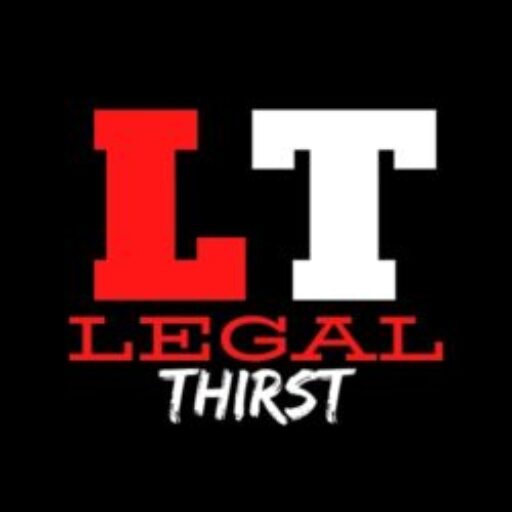What is Copyright?
A copyright is a collection of rights that automatically vest to someone who creates an original work of authorship – like a literary work, song, movie or software. These rights include the right to reproduce the work, to prepare derivative works, to distribute copies, and to perform and display the work publicly.
What does copyright cover?
- Literary, dramatic and musical work. Computer programs/software are covered within the definition of literary work.
- Artistic work.
- Cinematographic films which include sound track and video films.
- Record-any disc, tape, perforated roll or other device.
What are the rights of a copyright holder (which when violated lead to Infringement)?
In the case of literary, dramatic or musical work, not being a computer program-
- to reproduce the work in any material form including the storing of it in any medium by electronic means;
- to issue copies of the work to the public not being copies already in circulation;
- to perform the work in public, or communicate it to the public;
- to make any cinematography film or sound recording in respect of the work;
- to make any translation of the work; to make any adaptation of the work;
- to do, in relation to a translation or an adaptation of the Work, any of the acts specified in relation to the work in Sub-clauses (i) to (vi);
In the case of computer program –
- to do any acts specified in clauses (a);
- to sell or give on hire, or offer for sale or hire any copy of
- the computer program, regardless of whether such copy has been sold or given on hire on earlier occasions;
In the case of an artistic work –
- to reproduce the work in any material form including depiction in three dimensions of a two dimensional work or in two dimensions of a three dimensional work;
- to communicate the work to the public;
- to issue copies of the work to the public not being copies already in circulation;
- to include the work in any cinematography film .
- to make any adaptation of the work;
- to do, in relation to a translation or an adaptation of the work, any of the acts specified in relation to the work in sub-clauses (i) to (vi);
In the case of a cinematography film –
- to make a copy of the film including a photograph of. any image forming part thereof;
- to sell or give on hire or offer for sale or hire, any copy of the film, regardless of whether such copy has been sold or given on hire on earlier occasions;
- to communicate the film to the public;
In the case of sound recording –
- to make any other sound recording embodying it;
- to sell or give on hire or offer for sale or hire, any copy of the ,sound recording, regardless of whether such copy has been sold or given on hire on earlier occasions;
- to communicate the sound recording to the public;
Explanation :- For the purpose of this section, a copy which has been sold once shall be deemed to be a copy already in circulation.
How is computer defined for the purpose of copyright?/ What is the definition of a computer program?
Computer includes any electronic or similar device having information processing capabilities. Computer program means a set of instructions expressed in words, codes, schemes or any other form, including a machine readable medium, capable of causing a computer to perform a particular task or achieve a particular result.
What is the term of a copyright?
- If published within the life time of the author of a literary work the term is for the life time of the author plus 60 years.
- For cinematography films, records, photographs, posthumous publications, anonymous’ publication, works of government and international agencies the term is 60 years from the beginning of the calendar year following the year in which the work was published.
- For broadcasting the term is 25 years from the beginning of the calendar year following the year, in which the broadcast was made.
Is it necessary to deposit accompanying documents of the computer program for which copyright is being sought?
Documentation which normally accompanies the program is regarded as separate work and for this reason if the same has to be registered, it must be separately registered and not combined with the computer program in single application.
If an employee in a company develops a program, would this employee own the copyright?
No. In the case of a program made in the course of author’s employment under a contract of service or apprenticeship, the employer shall, in the absence of any agreement to the contrary, be the first owner of the copyright.
If an independent third party develops a program for a company, who owns the copyright?
Works created by third parties on commission do not automatically vest the copyright in the commissioning party. If the third party is an independent contractor, it is essential for the commissioning party to obtain the copyright through a written deed of assignment. It is a common misconception that the copyright automatically belongs to the commissioning party. Thus, it is only where the developer is an employee creating the work under a contract of service that the! Rights belong to the employer.
What is the rule for the transfer of copyright?
The owner of the copyright in an existing work or prospective owner of the copyright in a future work may assign to any person the copyright, either wholly or partially in the following manner.
- for the entire world or for a specific country or territory; or
- for the full term of copyright or part thereof ; or
- relating to all the rights comprising the copyright or only part of such rights.
In some of the programs, the screens could be the most commercially significant aspect. Is it necessary to register the program screen separately from the underlying code?
Generally, all copyrightable expressions embodied in a computer program, including screen displays, are protectable. However, unlike a computer program, which is a literary work, screen displays are artistic work and cannot therefore be registered in the same application as that covering the computer program. A separate application giving graphic representation of all, copyright able elements of the screen display is necessary.
What notice needs to he put on computer program copies to seek copyright protection?
When a work is published by authority of the copyright owner, a notice of copyright may be placed on publicly distributed copies. As per the Berne Convention for protection of literary and artistic works, to which India is a signatory, use of copyright notice is optional. It is, however, a good idea to incorporate a copyright notice.
What are the major provisions in the amended Copyright Act, 1999 with regards to computer programs?
The major provisions are :
- the doing of any act necessary to obtain information essential for operating inter-operability of an independently created computer program with other programs by a lawful possessor of a computer program provided that such information is not otherwise readily available;
- the observation, study or test of functioning of the computer program in order to determine the ideas and principles which underline any elements of the program while performing such acts necessary for the functions for which the computer program was supplied;
- the making of copies or adaptation of the computer program from a personally legally obtained copy for non-commercial personal use.
What does the term ‘Design’ mean according to the Designs Act, 2000 ?
“Design” means only the features of shape, configuration, pattern, ornament or composition of lines or colours applied to any article whether in two dimensional or three dimensional or in both forms, by any industrial process or means, whether manual, mechanical or chemical, separate or combined, which in the finished article appeal to and are judged solely by the eye; but does not include any mode or principle of construction or anything which is in substance a mere mechanical device.
What are the designs not registrable under the Act?
A design which:-
- is not new or original; or
- has been disclosed to the public any where in India or in any other country by publication in tangible form or by use in any other way prior to the filing date, or where applicable, the priority date of the application for registration; or
- is not significantly distinguishable from known designs or combination of known designs; or
- comprise or contains scandalous or obscene matter, shall not he registered.
What is meant by an article under the Designs Act, 2000?
Article means any article of manufacture and any substance, artificial, or partly artificial and partly natural; and includes any part of an article capable of being made and sold separately.
What is the object of registration of designs?
Object of the Designs Act is to protect new or original designs so created to be applied or applicable to particular article to be manufactured by industrial process or means. Sometimes purchase of articles for use is influenced not only by their practical efficiency but also by their appearance. The important purpose of design registration is to see that the artisan, creator, originator of a design having aesthetic look is not deprived of his bonafide reward by others applying it to their goods.
Disclaimer: The opinions and views in the articles and research papers published on this website; are personal and independent opinions of the author. The website is not responsible for them.
Legal Thirst has created a telegram group for exchanging legal knowledge, Events, and various opportunities.
You can click on this link and join:
Follow Legal Thirst on Instagram and Subscribe to our YouTube channel for more amazing legal content.



